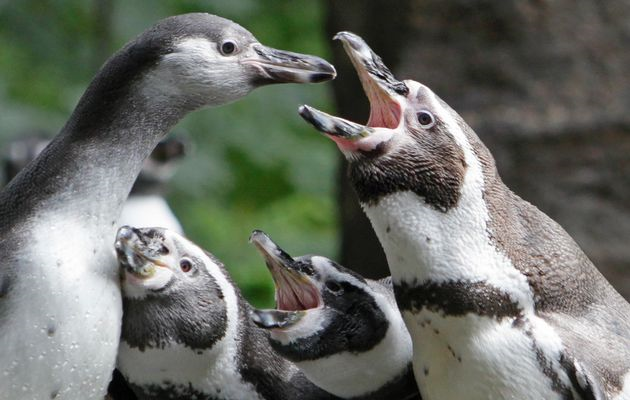

| Visitors Now: | |
| Total Visits: | |
| Total Stories: |

| Story Views | |
| Now: | |
| Last Hour: | |
| Last 24 Hours: | |
| Total: | |
Yachtsmen, rats, global warming threaten Chile’s humboldt penguins – ‘This area used to be completely filled with penguins and birds’
28 April 2013 (Sapa-AFP) – Several dozen Humboldt penguins sun themselves along the coast of an islet in central Chile where the majestic birds coming here to nest once numbered in the thousands. Humboldt penguins – which nest only in parts of Chile and Peru – over the years have become decimated by human encroachment, rat infestations and unforgiving weather currents carried by unusually warm El Nino ocean temperatures, naturalists said.
The Pajaro Nino islet, spread across a narrow channel of water from the popular resort area of Algarrobo, once drew about 2,000 of the birds during nesting season.
Today only about 500 of the birds come to this area some 120 kilometers (75 miles) west of Santiago.
“This area used to be completely filled with penguins and birds, but over time, their numbers have diminished,” said Ruben Rojas, a local fisherman.
There are various varieties of penguins that inhabit Chile, but the largest colonies of Humboldt can be found in the northern part of the country. The birds are identifiable by the distinctive black bands across their chests.
Experts have expressed alarm over the rapidly vanishing penguins. The once plentiful species is classified in Chile as “vulnerable,” while in Peru, the birds have been labelled ”endangered.” Alejandro Simeone, director of the Department of Ecology and Biodiversity at Andres Bello University, told AFP that there are currently fewer than 50 000 Humboldt penguins left in Chile and Peru.
“A multitude of factors threaten a species that is highly diminished relative to what once existed,” Simeone said.
The beginning of their demise dates back to 1978, when the island, which is also a nature sanctuary, was joined to the mainland by a cement fill-in – a breakwater designed to protect the yachts of millionaire sailing enthusiasts.
It created in effect a 150-meter (500-foot) bridge connecting the mainland to the island, and local residents say they have seen the detrimental impact of its construction on animal and plant life.
Yachters have been accused of trying to rid the region of the birds, and video footage has surfaced showing some deliberately – and illegally – destroying penguin eggs to prevent new broods.
Rojas said the yachters don’t like the excrement left behind by the birds. “They say it makes the island stink,” he explained.
Prosecutors say they are investigating the alleged destruction of the penguins’ eggs.
Part of the blame for the birds’ gradual disappearance goes to fishermen’s nets that ensnare hundreds of the birds each year. […]
Rats also are seen as a major culprit. The cement breakwater that connects the islet to the mainland also has given free access to rodents, which feast on the vulnerable eggs and hatchlings of the nesting penguins.
A 2012 study found that almost half of all penguin eggs on the island were devoured, primarily by rodents, within the first 12 hours of breeding period. [more]
Yachtsmen, rats, global warming threaten Chile’s humboldt penguins
2013-04-28 15:30:51
Source: http://www.desdemonadespair.net/2013/04/yachtsmen-rats-global-warming-threaten.html
Source:



